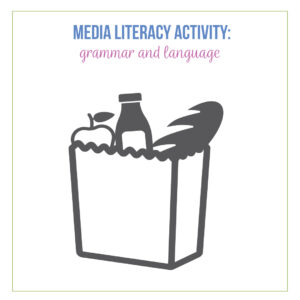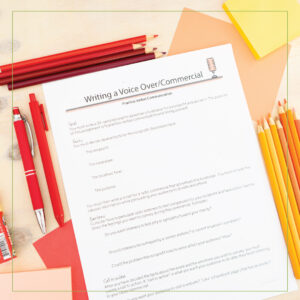Authentic assessments with media literacy require bringing pieces of life to the classroom.
Authentic assessments can involve showing connections from language arts to the bigger world and students’ lives. When teenagers investigate a real piece of media or news, when they research the money behind advertisements or political campaigns, we are engaging them with authentic assessments.
The authentic assessments in this post have various types of assessments. Rarely is there one right answer, but the activities require critical thinking in a number of ways.
Let’s define key concepts first.
What is media literacy?
Media literacy is the ability to access, analyze, evaluate, create, and act using all forms of communication. For years, English teachers have dabbled with innovative teaching, often having classes write and perform commercials or rank the commercials from the Super Bowl. The Internet and social media changed those approaches.
Today, media is so much more than commercials on television because students walk around with media in their pockets. These literacy lessons fit into informational text lessons, but they will work as stand-alone lessons as well.
No matter where you teach media literacy, you should prepare yourself for lots of questions. When we teachers present facts about media literacy, students question those facts because these ideas directly influence them! I embrace these questions, and sometimes hunt for answers together. I’m open with students about where and why I developed the authentic assessments with media literacy.
What is authentic assessment and how does it relate to media literacy?
Authentic assessment is an approach to evaluating students’ skills and knowledge in a real-world context. It relates to media literacy by allowing students to demonstrate their understanding of media concepts and skills through practical applications, such as creating projects or analyzing media texts.

Is gaining mastery possible?
Media changes constantly, and we teachers are busy. As much as anyone can gain mastery in the ever-changing field of media, we need advice. Teaching students to become critical thinkers, to question, to wonder is my goal, and in the creation of practical assessment tools, I asked other professionals for assistance.
As someone with a master’s degree in English, I am privy to an assortment of friends with fun careers that include advertising, writing, and law. A degree in English is versatile, and I am lucky to share that with close friends.
Whenever I am intrigued by something my friends work on, I ask if I can pick their brains to create an authentic activity for students. Normally, the end project falls under media literacy.
Below are four authentic assessments I created with other professionals to spark creativity with your students. I think you’ll be able to adjust the concepts and processes for your specific community of learners.
Campaign Mailers
Political candidates (in America) spend millions of dollars to send campaign mail and to influence voters. Politics will influence students, and they might not even know the money, time, and effort spent on votes. Teenagers are intrigued by large spending of money, and as future voters, they should be aware of our political process.
I sat down with a campaign manager and created an activity to show students where political campaigns acquire information, what is public knowledge concerning funds, and how physical advertisements send messages. Start a media literacy with a deep dive with classes:
- What voting information is public in their state?
- What website records donations?
- How much do people donate to politicians? Why should you care about who donates?
- What laws shape campaign donations and reporting?
As I worked with my friend, we narrowed down the process to analyze components through colors, fonts, pictures, and audience. For an authentic learning experience, use campaign mail from your community. I typically ask students to bring in pieces, but I bring in mailers (with my address marked out).
After front-loading information about your state, analyze the campaign piece. It should state who paid for the creation, and students can trace that back to the political candidate’s funding report. Furthermore, discuss if the piece is effective and how the components build that candidate’s overall message.
Food Marketing
Every piece associated with food is sending a message. Students might be aware that commercials and slogans are part of the marketing plan for food products, but they might not know that the food packaging, colors, and shapes are as well. When I sat with a friend who designs packaging, I developed an appreciation for the details on every package I encounter.
When I open a media literacy lesson on food, we brainstorm specific packaging. We might start with containers like Pringles, Lunchables, Oreos, juice containers, and candy wrappers. (Students normally mention the Rolo packaging.) What students remember? That matters! The packaging is memorable because of intentional branding.
Then, to create informed consumers, teach common terms from the marketing industry like targeted audience, jingle, and endorsements. Ask students to research facts about advertising budgets from popular brands and restaurants. They might not know how much money businesses spend on advertising. Students should understand that their information can be purchased, and they will be targeted. Part of creating well-rounded citizens is showing them the ways that businesses will use their information.
Radio Script
A radio commercial is tough to write. The information must be conveyed in a succinct way while also being a bit repetitive to emphasize the point. When students write a radio script, they are experimenting with a new format, an audio presentation. Students should target an audience that is busy and on-the-go. The information must be catchy as well.
Introduce authentic terms like VO (voice over) and ambiance noise, and encourage students to insert those methods into their radio scripts. Voice work, writing, and development are well-paying careers that students might not know exist.
My favorite part about writing a radio script? Students must narrow their message and make it tight. Students get to practice timing themselves, writing, and developing strong verbal communication skills without the pressure of speaking in front of a crowd.
I ask students to write a radio commercial for a nonprofit. Doing this allows me to provide authentic audiences. I have both reached out to nonprofit organizations and to radio stations to listen to my students’ final products.
Language Breakdown
Writers use our language to benefit themselves and their clients. This language one-pager asks students to analyze the way language influences food marketing. How does the language on the actual packaging contribute to increased sales? I always look for ways to study grammar in real life. Studying the language on food packaging engages learners and allows me to differentiate with the concepts studied.
Ask students to bring in food, ask for donations from a group, or bring in interesting food containers. (They may be empty food containers, but classes often volunteer to bring in food if they can snack with friends.) I have arranged food in a line for everyone to study, but I have also brought in containers in brown bags and allowed students to blindly choose.
This authentic assessment allows students to show what they understand about language and allows teachers to differentiate easily. You can review any grammar or language concept. Plus, understanding food choices contributes to lifelong learning concerning an everyday activity (eating) with huge implications.
Rubrics
Authentic assessments with media literacy help meet standards that ask for students to write for various audiences, to evaluate claims, and to analyze various accounts from different mediums. Teenagers are mass consumers of media! They probably are unaware of the psychology, effort, and funds that push marketing on them. Classes overwhelmingly enjoy learning about media literacy because they hate that ominous feeling of being tricked. Authentic assessments with media literacy engages older learners.
My rubrics focus on a variety of standards, but authentic assessments with media literacy often relates back to conduct short research projects to answer questions. Quizzes and traditional assessment won’t work while addressing various media education.
Media production is constant in our world, and best practices require we give authentic tasks to our students. We must adapt summative assessments and formative assessments to analyze the digital tools our learners use daily.










